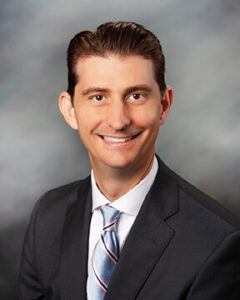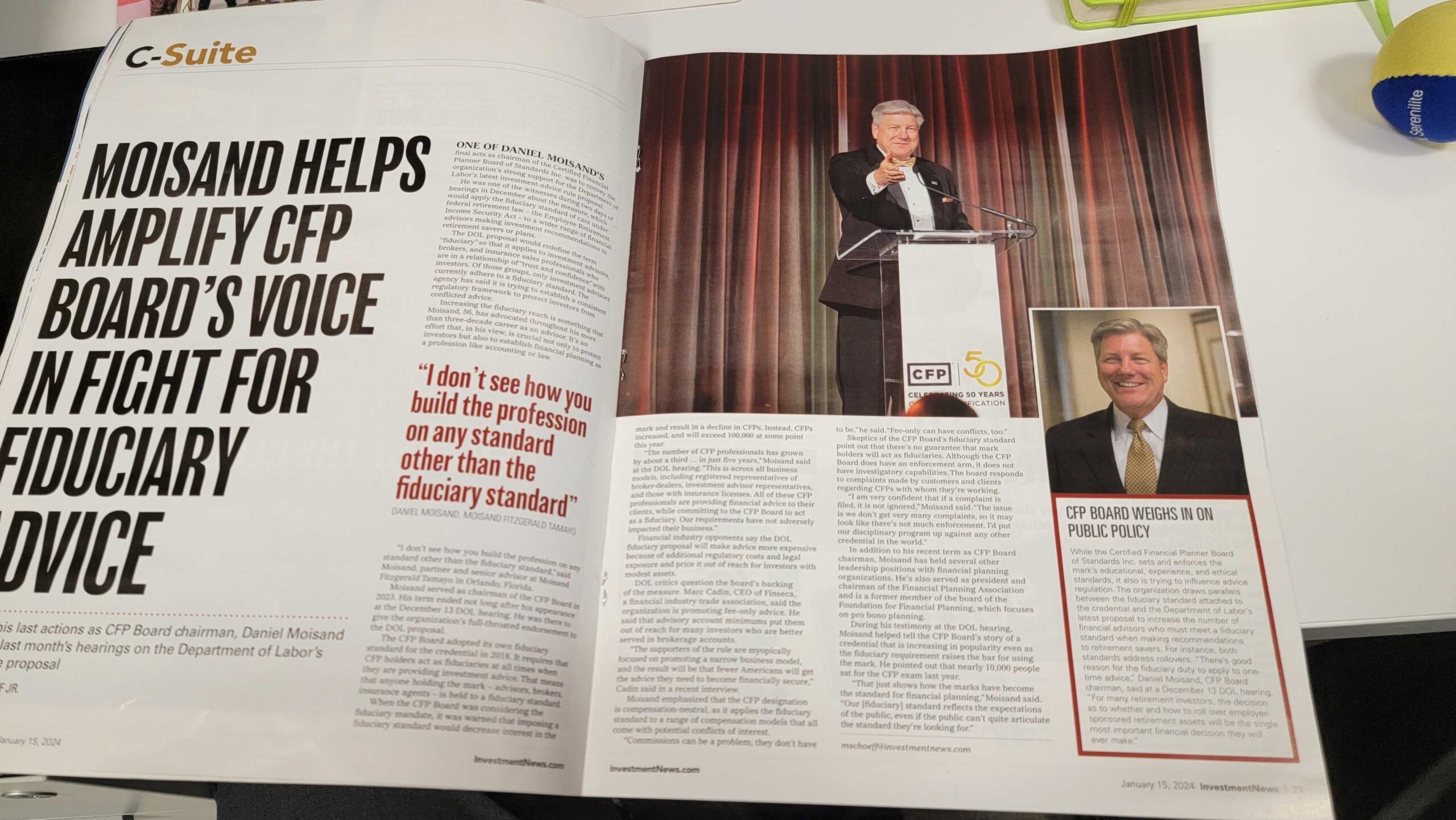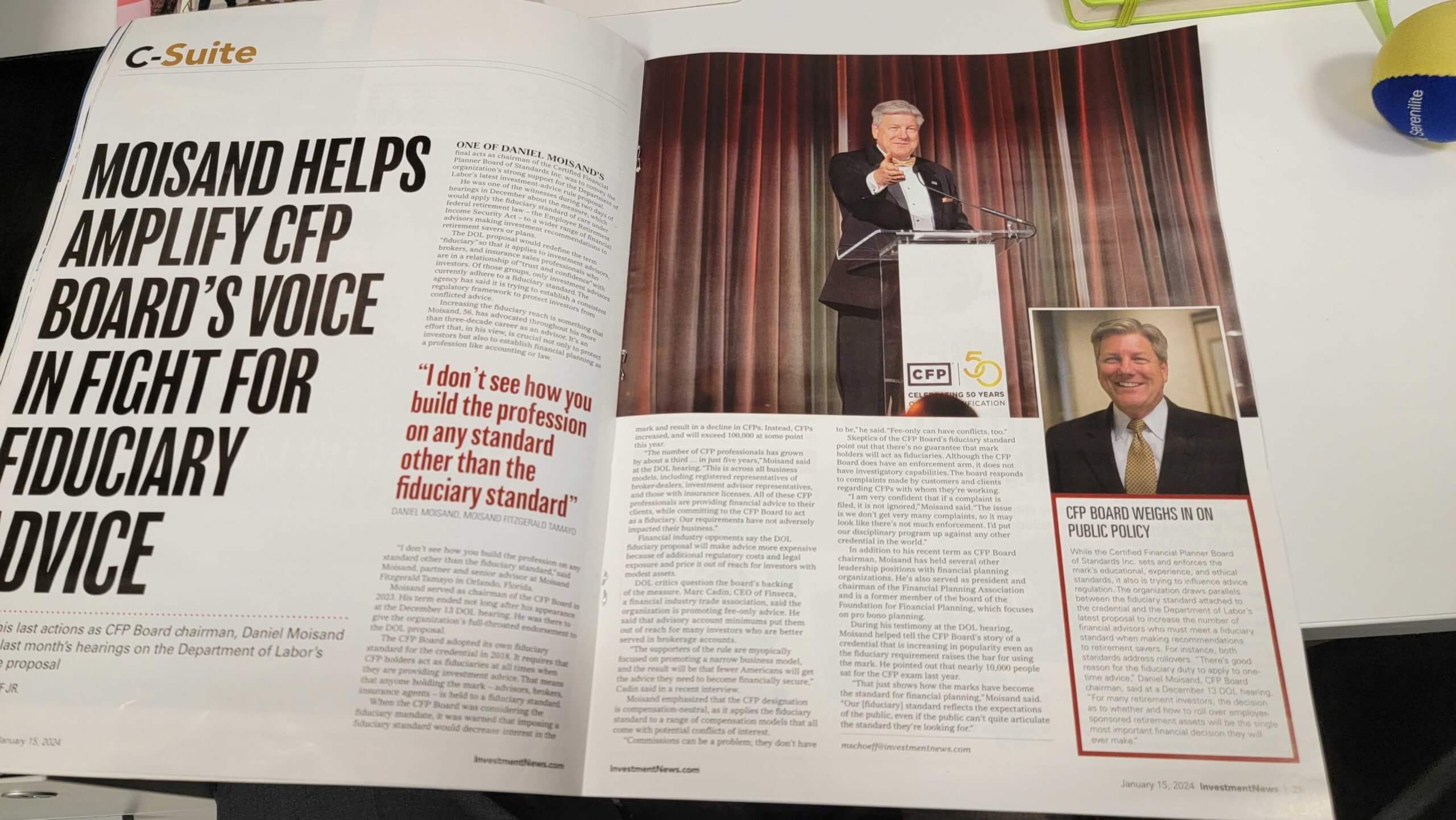When does the 60-day period for IRA rollovers start?
Today’s question comes from Mike in Celebration, FL. “I want to do a rollover from one IRA to another. I read I have 60 days to get it done but no one mentions when that 60-day rollover clock starts. Is it when the check is cut or when I cash it?”
Mike, it is neither. The 60-day rollover window begins the day you received the check from the issuer, not the date on the check, the date in the postmark on the envelope with which the check was mailed to you, or the date you cash the check. The 60-day rollover window ends when the funds are deposited and all days count so if the window ends on a weekend or holiday, you will want to make the deposit the business day before that.
Be careful about this rollover, Mike. There are risks involved. Getting money sent to you from one IRA and then depositing those funds back into an IRA in the 60-day rollover window is often referred to as a “traditional rollover,” an “indirect rollover,” a “60-day rollover,” or just plain “rollover.” Done properly, there is no tax liability.
You will receive a Form 1099-R early next year. You simply report that amount on your Form 1040 on line 4a “IRA Distributions.” Then put zero on line 4b “Taxable Amount” and note on the return the word “Rollover.”
Done incorrectly, a 60-day rollover can cost you.
Done incorrectly, a 60-day rollover can cost you.
You can only do a 60-day rollover once in a twelve-month period. Like the 60-day window, the twelve-month period begins the day you receive the check from the issuer. So, if you have done a 60-day rollover in the last twelve months, you shouldn’t do another one for another twelve months. Otherwise, the rollover will be invalid and taxable. If you are younger than 59 1/2, an additional 10% penalty can apply. We don’t want that!
In addition, an invalidated rollover may cause something called an “excess contribution.” That’s a problem because the penalty for an excess contribution is 6% per year every year going forward until it is fixed.
See, the only way taxpayers are allowed to deposit to an IRA is a valid rollover or an annual contribution. Annual contributions are subject to a limit. For 2024, the limit is $7,000 or $8,000 if you are over age 50.
Say you made a $50,000 rollover that is deemed invalid. If you had earned income and were eligible to contribute to an IRA, you may have made a $42,000 excess contribution. If you were not eligible to contribute, the excess contribution would be the full $50,000. That equates to a $3,000 penalty (6% of $50,000) just for the first year the excess remains in the IRA.
These tax issues can be avoided simply by using a different rollover method. Instead of having a check made payable to you and redepositing to an IRA within 60 days, instruct the issuer to make the funds payable to the IRA at the receiving firm. These transfers are often called “direct rollovers” or “trustee to trustee transfers.” Transfers from one traditional IRA to another traditional IRA do not generate 1099-Rs so there is nothing to do or worry about when filing your tax return.
While only one 60-day rollover is allowed in a twelve-month period, there are no limits to the frequency of the direct rollovers described above. As a result, we have a strong preference for the direct rollover method.
Making News…
We continue to help various media outlets provide sound information to their audiences. (Some links may require a subscription to view.)

Dan Moisand,CFP® continues to write for Florida Today and MarketWatch, which are sometimes syndicated to other sites such as YahooFinance.
If you have IRA questions, here’s what to know about the pro-rata rule – Florida Today
Can I contribute to a Roth 401(k) if I earn a high salary? – MarketWatch
I’m 74, if I went back to work could I get out of my RMD? – MarketWatch
I was in the hospital and didn’t take my RMD last year. How can I fix it? – MarketWatch
MAGI, IRA, tax alphabet soup: What am I missing about deducting contributions? – Florida Today
I want to tap in to my 401(k) early. What ways are allowed? – MarketWatch
Can my employer automatically enroll me in the 401(k)?-MarketWatch
In the News…
Moisand Fitzgerald Tamayo, LLC was named by USA Today as one of the Best Financial Advisory Firms in the United States for 2024. The publication teamed with research firm Statista, whose methodology examined growth and recommendations from peers and clients. This marks the third national publication in the last 13 months to recognize our team (Forbes, RIA Edge)
If you are a member of an organization in need of a personal finance speaker, we are happy to talk with your group’s organizers about helping out at no cost.
Brad Brescia, CFP was featured in two articles for Investment Advisor magazine titled, “15 Portfolio Spring Cleaning Tips.” Simplifying was a theme several of the advisors cited but Brad wisely pointed out, “Decluttering your accounts may have serious tax implications; make sure you understand what those are before you make any large moves!” He went on to say, “I spend most of my time talking about purpose… What are you trying to accomplish?…Ensure that any cleaning or simplification does not negatively impact that financial plan by pulling assets away from their intended purposes.”
In “10 Keys to Boosting Retirement Portfolios in a Surging Market: Advisors’ Advice” Brad points out “…it’s crucial for retirement-focused clients to maintain a perspective that transcends immediate market movements. Our guiding principle during these times is simple: Focus on comprehensive financial planning.”
Here are a few more of Brad’s contributions:
Single woman seeks wealth management: How to advise independent female clients – Financial Planning
You don’t have an aging plan in place? Read this – now – MarketWatch
DJ Hunt, CFP® told readers of Financial Planning magazine in “Social Security is still in trouble. What should advisors tell their clients?” that while there are concerns regarding what needs to be done to shore up Social Security, he was confident some action would be taken to avoid cuts on current recipients. He pointed out, “…the folks who receive Social Security are also the ones who vote.”

Tommy Lucas, CFP®, EA assisted a reporter from Fortune magazine for “7 tax tips to make sure you get the biggest refund, according to financial advisors.” Tommy articulated the essence of good tax strategy when he said, “Your goal should be, over your lifetime, to pay taxes when you are in low tax brackets and defer income when you are in high tax brackets.”
Tommy also provided financial tips for Business News and assisted CNBC reporters on the following topics, a couple of which were syndicated to NBC affiliates:
How to Lend Family Money Without Wrecking Your Relationship – Wall Street Journal
This 401(k) match change could have ‘unintended consequences’ at tax time, experts say – CNBC
What Biden’s new student loan forgiveness plan means for your taxes – NBC4 Washington
Notable
78% of near-retirees failed or barely passed a retirement Social Security quiz. (MassMutual)
86% of retirees in a survey by Elite Insurance Partners said they wish they had saved more.
Healthcare costs for Medicare households in 2022 were 53% higher than in 2013. (KFF)
54% of Bachelor’s degree students graduate with debt (USA TODAY)
A study conducted recently by a team of academic researchers at the American College of Financial Services found respondents that work with an advisor had higher scores across all knowledge areas, are more financially well and feel more confident about retirement. Further, having a financial advisor predicts increased confidence and decreased stress and anxiety, controlling for demographic factors.

